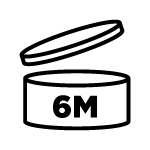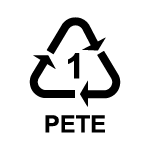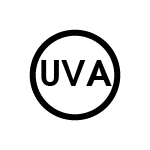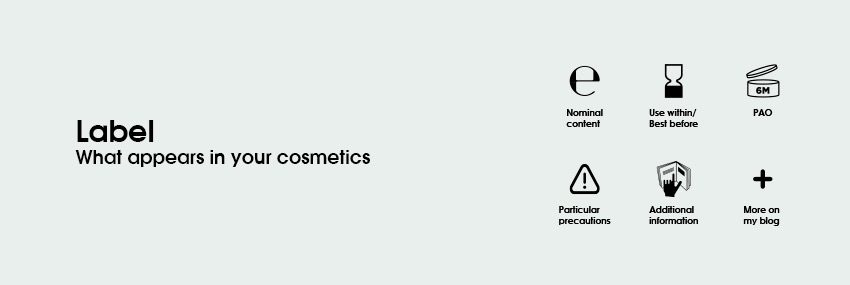Did you know that all cosmetics must include the same information on their label? I’m sure that at least once you must have stared at a skincare product’s packaging without understanding some of its symbols or text. This post is the answer to all your question about cosmetics’ labelling (even the most difficult ones)!
A few weeks ago I shared an article in which I told you about the ingredients list and all the information that we can find in it. Today I want to go a little further and talk to you about the labeling of cosmetics and why it is important to know the requirements that it must meet.
Although we are used to seeing cosmetics on a daily basis, we do not always look at all the information available on its label and packaging, but it is key when it comes to understanding what it can provide us and the characteristics of the product. After reading this article you will know how to identify all the information available on the labels, so read on if you want to know your cosmetics better!
Specifically, the topics you can find in this article are the following:
- Who regulates the labeling of cosmetics?
- The importance of the ingredients list.
- What symbols can we find on cosmetic labels?
1. WHO REGULATES THE LABELING OF COSMETICS?
In the European Union, the basic standard that regulates cosmetics is Regulation 1223/2009 of the European Parliament and the Council. On its article 19, this Regulation includes a series of basic elements that the labels of all cosmetics sold in the European Union must include:
- Name and address of the responsible person.
Although this information may seem obvious (or even unnecessary), it is essential in case we observe any unwanted reaction when using a product, since we must be able to notify said person in charge in a simple way. This is very important, since when we have problems with a product we must be able to contact someone to tell us what to do and even take care of notifying other buyers in case a certain batch of products is defective. - Country of origin, if it is an imported cosmetic.
- Nominal content by weight (usually grams) or volume (usually milliliters), except for products sold individually.
- Use within or best before date or, in the case of products with a shelf life of more than 30 months, the PAO symbol (you can read more on the subject in this other article).
- Particular precautions to be taken when using the product.
- Batch number or reference.
- Function of the product (in case it is not obvious).
- List of ingredients (I recently discussed this in detail in this basic guide).
Although it seems simple, it is not easy to adhere to all the rules and requirements so that the labeling of cosmetics perfectly complies with the law. For example, what if all this information cannot be included in the product for some reason (such as its small size)? In these cases, it is allowed to be collected on a label or band attached to the product, so that you can have all this data.
And in what language should all the information I mentioned be included? Each country develops it following its own criteria. In the case of Spain, the product data must be included in Spanish, although there are certain aspects that can be provided in English or French (despite this, the authorities may request that this information be provided in Spanish).
As you can see, the basic information available on the labeling of cosmetics is essential when it comes to identifying them, knowing what they can contribute and if they really fit what we are looking for. However, we can often find other symbols and data that help us fill in that basic information, something that I will talk about a little later.
I want to emphasize a key aspect regarding the labeling of cosmetics, and that is that you may find products that do not meet these requirements, especially when it comes to products sold in alternative markets (such as medieval fairs, craft markets, etc.). It is important that we are aware that if a product does not comply with the regulations it is because irregularities are being committed, so that there is no control over the product and, in case there is an unwanted reaction or any type of problem, we will not be able to have any kind of guarantee.
This article is not (nor does it pretend to be) an exhaustive analysis of the regulations on cosmetics, but I think it is important to give you a few basic ideas so that you know what information is the very least you should have. In relation to this, it is interesting to mention that, to ensure our protection in relation to cosmetics, in 2018 the National Alert Network for Cosmetic Products and the Spanish Cosmetovigilance System were created in Spain, a structure coordinated by the Spanish Agency for Medicines and Health Products (AEMPS or Agencia Española de Medicamentos y Productos Sanitarios) that is in charge of evaluating notifications about unwanted effects from the normal use of cosmetics. Why do you need to know this? Because in case you detect any type of unwanted effect when using a cosmetic you can directly notify these authorities directly through this form. As I said before, at any time we can contact the manufacturer directly or the AEMPS itself if we observe problems with a cosmetic and they will be in charge of channeling our notification so that the case is investigated and it is found out if our problem is something isolated, if a batch of products is defective or even if a cosmetic should be recalled because it produces the same side effects repeatedly.
As you can see, the labeling of cosmetics plays a fundamental role in providing us with the most elementary information about the product but also so that consumers are protected. Now that you know the minimum data that you must find on the label, let’s take a closer look at each of its elements!
2. THE IMPORTANCE OF THE INGREDIENTS LIST.
If you like cosmetics and learn about what each product can bring you, the list of ingredients is probably one of the first things you look at before buying a product. It is an common element to all cosmetics (as I mentioned in the previous section) and it gives us a lot of interesting information about the product, but you have to know how to understand it. I recently published a basic guide on the ingredients list (INCI), in which I talk in greater detail about this topic.
I consider that knowing how to read the list of ingredients of a cosmetic is essential when it comes to knowing what it can bring you, if it is for you or how it can be compared to another product. There are certain common elements to all ingredient lists and that will allow you to read them correctly: ingredients are ordered according to their concentration (from highest to lowest), except those with a concentration equal to or less than 1%; vegetable derivatives are stated with their name in Latin (the rest of the ingredients usually appear in English or French); if nanomaterials are included, it must be expressly indicated, etc.
Of course, although the list of ingredients can provide us with a lot of basic information about a product (for example, we can rule out those with ingredients to which we are allergic or that we prefer to avoid), we must bear in mind that it is not the only element in that we should look at when choosing a cosmetic that suits our needs and preferences. After all, there are many aspects of the product that do not appear in the ingredients list, such as the final formula, the texture, the scent or even the specific proportion of each ingredient.
As I mentioned before, although the ingredients list is one of the main characters of the labeling of cosmetics, there are other symbols that can help us understand its characteristics, let’s see them!
3. WHAT SYMBOLS CAN WE FIND ON THE LABELS OF COSMETICS?
Nominal content.

This symbol, which we can identify because it resembles the letter “e”, indicates the amount of product contained in the container in units of mass (grams) or volume (milliliters) at the time of manufacture (since some products can degrade over time, in a way that some of their content is lost).
It is not essential to include the nominal content in products of less than 5g or 5ml, single use products and samples. If the product is marketed by units, it must be indicated how many are included.
Use within / Best before.

This symbol, consisting of an hourglass, indicates the date until which the stability and safety of a cosmetic are guaranteed, which we usually know as the expiration date. If this date of minimum duration is greater than 30 months, it will not be necessary to expressly indicate it, but the PAO symbol may be used, which I will talk about below.
PAO (Period after opening).

This symbol, which I talked about in greater detail in my article on the expiration of cosmetics, can be identified by its shape of an open jar with a number. This refers to the number of months that the stability and safety of the product are guaranteed after opening (of course, as long as it is properly used and stored).
Particular precautions.

This symbol, which does not always appear on our cosmetics, alerts us of the presence of an ingredient that requires special care. Usually, when we find this symbol, it will be accompanied by specific indications about the use of the product.
Additional information.

This is a symbol with a very similar function to the previous one, although it does not refer strictly to aspects with which we have to take special care to guarantee our security, but it can provide us with information of interest that it may be convenient for us to know at the time of use a product.
Green dot.

You have surely seen this symbol on more than one occasion. Formed by two arrows, it indicates that the packaging is recyclable, an aspect on which the European Union places special emphasis in order to help preserve the environment.
Container material.

A symbol that does not always appear in our cosmetics but that helps us to know more about recycling is the one made up of the three Möbius arrows (a classic recycling symbol) with a number inside, which refers to the different materials (1 for PET or polyethylene terphthalate; 2 for HDPE or high-density polyethylene; 3 for V or PVC, vinyl or polyvinyl chloride; 5 for PP or polypropylene; 6 for PS or polystyrene and 7 for other plastics).
Sun protection factor (SPF).

All sunscreens must clearly and expressly indicate their ability to protect against ultraviolet radiation. Specifically, the SPF refers to how they protect us against UVB radiation (you can read more about the subject in this other article). Besides this, it is indicated if the protection provided by the product is low, medium, high or very high.
UVA symbol.

This symbol allows us to know that a sunscreen also protects us against UVA radiation, thus covering the “deficiencies” of the SPF. In addition to this, we increasingly find products that use other systems (such as PA, which I discuss in detail in this article) to clearly express their ability to protect against this type of radiation.
Other symbols you can find.

In addition to the ones I mentioned above, there are other symbols that usually appear in our cosmetics and that refer to other aspects that may be of interest. Some of these symbols indicate that it is a vegan or organic product (although there is still no specific regulation on the subject, there are certain associations such as ECOCERT that guarantee in a certain way that certain practices are carried out), if it is a cruelty free cosmetic (usually represented with a bunny and that is used as a marketing tool to indicate that a cosmetic has not been tested on animals, a topic that I talk about in detail in this other article), etc.
As you can see, there are many symbols that appear on cosmetic labels, and that is based on the fact that there is no harmonization on a good part of them (which means that we can find references to the same aspect in different ways in function of the aesthetics of each brand). In any case, with this article I hope I have helped you get to know your cosmetics a little better.
If you liked this article and want to continue learning how to take better care of your skin, you will surely be interested in reading these others:
- Understanding the ingredients list (INCI): basic guide.
- PAO and expiration date: when do skincare products expire?.
● Follow me on Instagram, Facebook, TikTok and Pinterest.
● Share, comment and like my posts on social media.
● Shop through my links to help me keep up with this blog.

I’m Nacho and I’m passionate about skincare. I really enjoy learning and sharing my knowledge about skincare and I read scientific papers so you don’t have to. I want to break stereotypes because I believe skincare has no gender: skin is skin.



This post has helped me a lot to identify the toxins, since I am trying to only use natural products. However, I am very interested in the brand eCooking and Hylamide, what do you think about these brands and their ingredients?
Hi Melisa! Welcome to my blog! 😊
I’m happy to help you through my posts! I recently received a couple of products from the Hylamide range, although I still haven’t included them in my routines (so I can’t tell you about my experience using them). I’ll keep you updated about them!
In any case, remember that natural products (or the ones that claim to be natural, since there isn’t a regulation on this topic), aren’t necessarily better. What matters the most is using effective products that provide us with the results we aim for. Regarding ‘toxins’, you should take into account that all products we purchase in the EU are completely safe, since they pass several evaluations to make sure they are both stable and safe (and all ingredients are approved to be used for cosmetic use up to a certain percentage). I’m planning to write a post about this issue, so stay tuned! 😉
All the best,
Nacho.